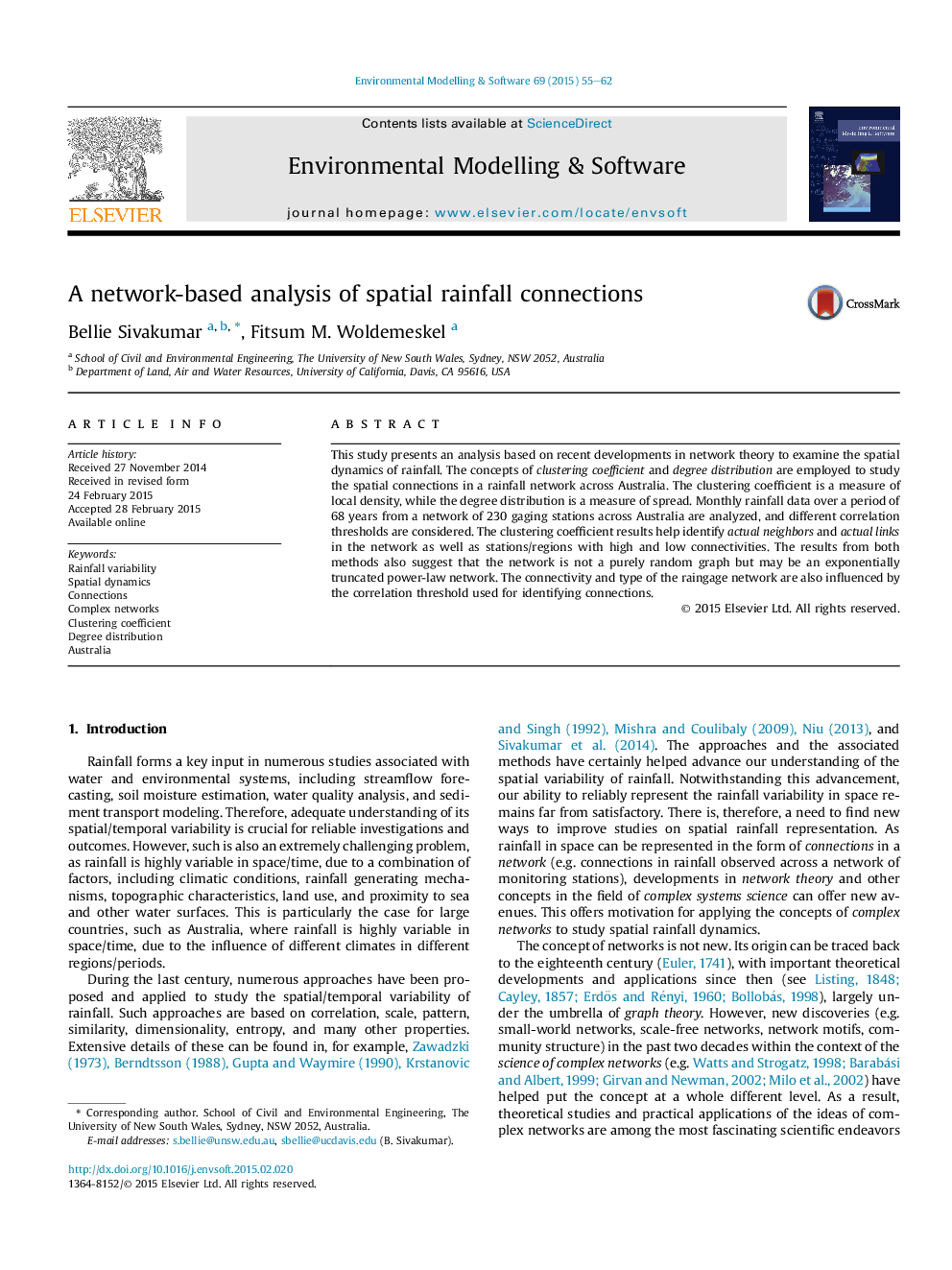| Article ID | Journal | Published Year | Pages | File Type |
|---|---|---|---|---|
| 6963256 | Environmental Modelling & Software | 2015 | 8 Pages |
Abstract
This study presents an analysis based on recent developments in network theory to examine the spatial dynamics of rainfall. The concepts of clustering coefficient and degree distribution are employed to study the spatial connections in a rainfall network across Australia. The clustering coefficient is a measure of local density, while the degree distribution is a measure of spread. Monthly rainfall data over a period of 68 years from a network of 230 gaging stations across Australia are analyzed, and different correlation thresholds are considered. The clustering coefficient results help identify actual neighbors and actual links in the network as well as stations/regions with high and low connectivities. The results from both methods also suggest that the network is not a purely random graph but may be an exponentially truncated power-law network. The connectivity and type of the raingage network are also influenced by the correlation threshold used for identifying connections.
Keywords
Related Topics
Physical Sciences and Engineering
Computer Science
Software
Authors
Bellie Sivakumar, Fitsum M. Woldemeskel,
